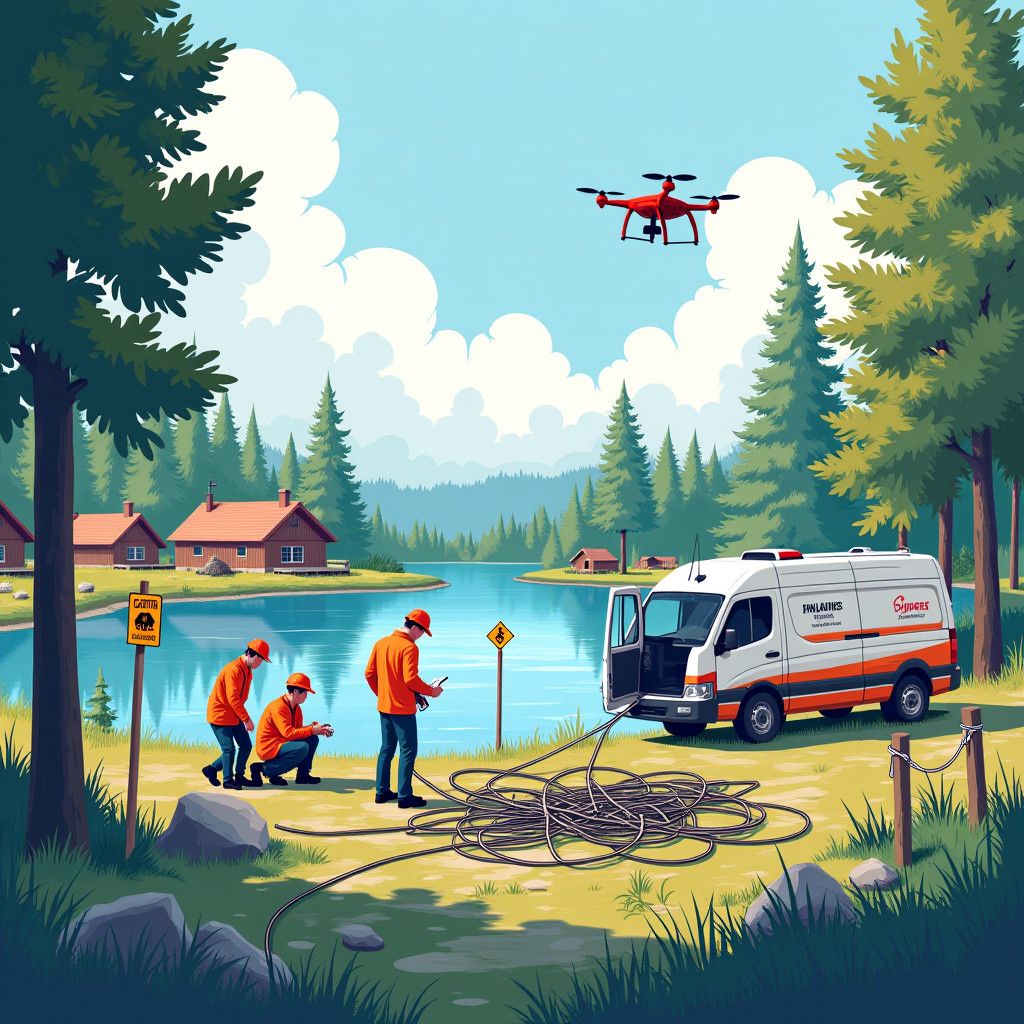In a recent event that raised significant concern across the tech community, Finland reported accidental damage to its internet infrastructure. This incident highlights the fragility of global internet accessibility, as well as the potential impacts on businesses, governments, and individuals relying on uninterrupted connectivity.
On December 4, 2024, Finnish authorities confirmed that the disruption stemmed from construction activities, rather than sabotage or malicious intent. This distinction is critical, as it helps to alleviate fears regarding cybersecurity threats that are increasingly prevalent in today’s digital landscape. Accidental damages to internet cables can have far-reaching consequences, illustrating how a single incident can disrupt communication on a broader scale.
The Incident: What Happened?
According to reports, a construction crew inadvertently severed crucial fiber-optic cables during excavation work. The incident occurred in a busy area known for numerous infrastructure projects, which indicates a growing need for better notification systems or communication protocols between construction teams and telecommunication companies. In this case, the lack of such measures resulted in disrupted internet services, influencing both local businesses and residents.
Imagine running a small business that relies heavily on online transactions. An unexpected internet outage could lead to significant revenue loss and damage to customer trust. The situation demonstrates a crucial point: disruptions in connectivity can directly affect economic stability and individual livelihoods.
The Bigger Picture: Impact on Global Connectivity
Finland’s incident sheds light on a larger issue: the global infrastructure that supports our internet services is often vulnerable. While this specific case involved accidental damage, it serves as a reminder of how crucial robust infrastructures are in today’s interconnected world.
In 2020, a similar incident occurred when a ship anchored off the coast of Egypt cut a submarine cable, leading to disruptions across multiple countries. Such events can lead to widespread issues beyond the immediate location. This kind of dependency raises urgent questions about how nations can secure their internet infrastructures.
The international nature of internet connectivity means that regional disruptions can have global repercussions. A single cable cut can affect websites, applications, and communication across various sectors worldwide. Therefore, investing in diversifying connections and redundancy options is paramount. For businesses, this might involve implementing backup internet connections or exploring hybrid work models that do not entirely rely on constant internet access.
Recommendations for Mitigating Future Risks
To prevent similar incidents in the future, several measures can be adopted:
1. Enhanced Communication Protocols: Stricter communication guidelines between construction companies and telecommunication providers can reduce the likelihood of accidental damage. Regular meetings to discuss upcoming projects can facilitate this.
2. Public Awareness Campaigns: By educating the public and businesses on the importance of reporting potential underground installations, regulatory bodies can foster a culture that prioritizes awareness.
3. Investment in Infrastructure Resilience: Companies involved in telecommunications should consider investing in redundant systems and alternative routing to provide fallback options when primary connections are compromised. This may include more comprehensive monitoring to swiftly identify and rectify issues.
4. Legislation and Policy Development: Governments can develop policies that enforce safety regulations regarding underground installations. Setting mandatory penalties for negligence can also serve as a deterrent.
Conclusion
The accidental internet cable damage in Finland serves as a cautionary tale for nations and organizations alike. It highlights the fragile connectivity that keeps the global economy humming. As industries increasingly shift towards digital environments, ensuring that internet infrastructure is resilient is crucial. With awareness and proactive measures, it may be possible to mitigate risks, thereby sustaining both local and global connectivity.
In a world where internet outages can lead to significant implications, the focus should be on collective action to enhance infrastructure reliability. The future of communication depends not only on technological advancements but also on how we safeguard the systems we currently have.












